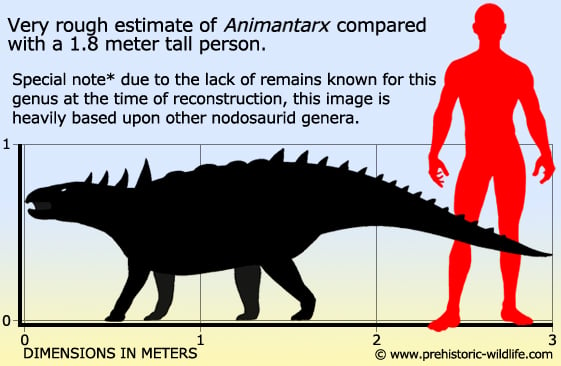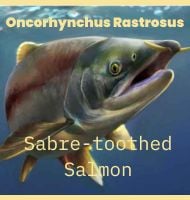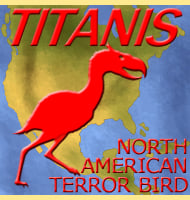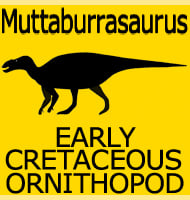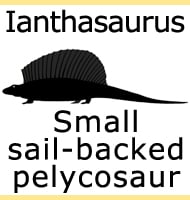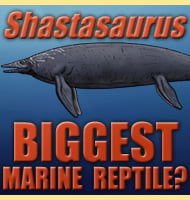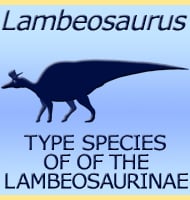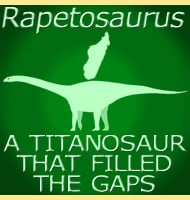In Depth
While Animantarx may not be the best known nodosaurid dinosaur, it is a contender for having one of the coolest dinosaur names. Unfortunately Animantarx is only known by an incomplete skull, lower jaw and some vertebrae, which means that reconstructions are reliant upon other nodosaur parts and a best guess by the reconstructions. Fortunately nodosaurs tend to be quite similar in their general appearance, being squat, quadrupedal and having a covering of bony armour plates along the back and sides of their body with possible large spikes around the shoulders. In this respect nodosaurs resembled their more distant relatives the ankylosaurs, though nodosaurs lacked their tail clubs, and it’s reasonable to assume that Animantarx did not have a tail club either.
Animantarx come from the Cedar Mountain Formation which is also home to other dinosaurs such as Gastonia, Cedarpelta and Peloroplites, the latter two actually coming from the same Mussentuchit Member as Animantarx, suggesting that there may have shared the same habitats at the same time. Sauropelta is also thought to be in the Cedar Mountain Formation, but later thinking suggests that these fossils might belong to Peloroplites. Aside from these armoured dinosaurs, Animantarx may have lived alongside sauropods like Abydosaurus and ornithopods like Tenontosaurus, Eolambia and Zephyrosaurus.
The type species name A. ramaljonesi is in honour of Ramal Jones who discovered the first Animantarx remains. Ramal’s wife Carol, had the type species of Eolambia named after her.
Animantarx has been considered to be a close relative to the better known Edmontonia.
Further Reading
- Ankylosaurs (Dinosauria: Ornithischia) of the Cedar Mountain Formation, Utah, and their stratigraphic distribution. In: Gillette, D. (Ed.), K. Carpenter, J. I. Kirkland, D. L. Burge & J. Bird - 1999. - Phylogenetic analysis of the Ankylosauria. In: Carpenter, K. (Ed.), Kenneth Carpenter - 2001.
